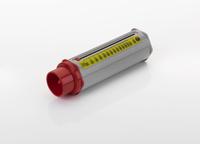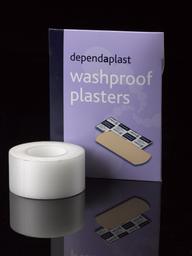

Dual Aid Expired Air resuscitator, Buckingham, England, 1987
- Made:
- 1987 in Buckinghamshire

Dual Aid Expired Air resuscitator designed to protect rescuer from casualties secretions and exhalations. Usable in nose or mouth. Devised by Dr T.H. Howells, made by Vitalograph Ltd, 1987.
The Dual Aid Expired Air resuscitator was designed for use in emergencies where either Expired Air Ventilation (EAV) or Cardio Pulmonary Resuscitation (CPR) is required. The two responses differ in that EAV is performed in the brief period when breathing ceases but the heart still beats, whereas CPR is started when both breathing and heartbeat cease.
During EAV, the Dual Aid Expired Air resuscitator is placed either in the nostrils or down the throat. Breath is forced into the body of the unconscious patient. During CPR, breaths are alternated with chest compressions to stimulate the heart. The plastic resuscitator protected the rescuer from a casualty’s secretions and exhalations, and therefore from infectious disease. It was considered unsuitable for use on children. The air resuscitator was devised by Dr T. H. Howells. It was made by Vitalograph Limited.
Details
- Category:
- Emergency Medicine
- Object Number:
- 2002-514
- Measurements:
-
overall: 174 mm x 90 mm x 66 mm, .092 kg
bag: 12 mm x 120 mm x 200 mm, .01 kg
- type:
- resuscitator
- credit:
- Howells, T.H., Dr.




